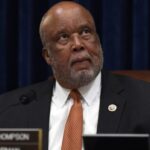
–>
August 31, 2022
The Biden administration has its priorities for education: bailing out dropouts, deadbeats, and foolish investors in negative-return degrees and schools. Meanwhile, the nation’s primary and secondary public schools are in crisis and the administration has nothing to say. This seems impossible when there is nothing more important to the economy, equality of opportunity, race relations, and reducing incarceration.
‘); googletag.cmd.push(function () { googletag.display(‘div-gpt-ad-1609268089992-0’); }); }
Biden’s support for the world’s longest physical school closures didn’t help, but the teachers’ unions donated tens of millions to Democrat candidates in 2020, and Biden faired the best. School kids and Americans will be paying the price for years to come, and it will be a hefty price tag if something isn’t done to remedy the damage. In June 2020, McKinsey fired an analytical warning shot based on remote learning continuing until Fall 2020, January 2021, and Fall 2021. The annual GDP losses varied by scenario, from an estimated $44 billion to $221 billion. The percent of income lost was greater for Latinos and Blacks. Over the affected students’ lifetimes, that’s a multi-trillion-dollar GDP setback.
During remote learning, three million children never logged in. Cheating skyrocketed. Absenteeism was up on average 39%, and more than a third of students experienced poor mental health. Schools in Washington state stopped counting truancy because the numbers were too high, while others, like Illinois, reported truancy for the 2020/2021 school year at 22.8%. Prior to this, it was next to nil. Amazingly, graduation rates in 2021 reached new highs. Nowhere is this more amazing than in Chicago’s public schools. Graduation rates soared to 84%. For Blacks, it was up 2%, and this occurred when only 7.9% of Black students met or exceeded the math standard, and 9% met or exceeded the reading standard.
Higher graduation levels have broadcast that American schools are so extraordinary that non-participation and remote learning didn’t affect outcomes. The federal government can share in the congrats. Despite dire warnings of the damage from remote learning, they issued assessment and accountability waivers for 45 states for a second school year (2020/2021). Some assessment data is trickling out and it is sobering. Between 2018 and 2021 in Illinois, reading proficiency for Blacks went from 13.9% to 11.7%. Math went from 11.6% to 8.3%. Reading proficiency for Latinos went from 22.5% to 18.9%, and math from 21.4% to 15.4%. For Whites, reading proficiency went from 47.8% to 43.1% and math from 45.0% to 38.5%. In Washington state, reading proficiency by racial group fell 13% to 25%, but math scores plunged further. Math proficiency for Blacks went from 27.9% to 13.7%. That’s a loss of 51%. For Latinos, the fall was 53% from 31.4% to 14.8%. In Washington, these outcomes seem by design. Some schools taught that math is racist. Math proficiency for Asians fell by 20%, from 73.8% to 58.7%. Across the United States, Asian students suffered less, but Asian parents have demonstrated the important roles parents play in their children’s educational outcomes.
‘); googletag.cmd.push(function () { googletag.display(‘div-gpt-ad-1609270365559-0’); }); }
The quality of America’s public education system has been sliding for some time. The faith Americans had in their public schools began to change in the 1980s and 1990s and paralleled the rise in membership in teachers’ unions. At this point, confidence is in the abyss. In 2002, the federal government passed No Child Left Behind, and all schools were to achieve 100% math and reading proficiency by 2014. It’s 2022, and we’re not even at 50%. Per student spend has gone from $9,949 in 2001/2002 to $13,394 in 2020. Would more money help? D.C. schools had a per student spend of $22,856. Those that met or exceeded reading, math, and science proficiencies in 2019 were 37.2%, 30.7%, and 12.6%, respectively. Academic performance in Utah ranked 27 positions higher than D.C. with per student spending of $8,000.
In 2021, at 1%, D.C. schools had the lowest in-person enrollment, presenting dreary prospects for imminent proficiency improvements. However, across the nation the prospects are bleak. Right now, most Blacks and Latinos, and many White and Asian students have SAT scores that indicate a lack of preparedness for college. Adults without college degrees are likely to be government dependents.
Recently, Florida Governor Ron DeSantis went all out to secure the right candidates for school boards. Some said it was a make or break move for DeSantis to take on the unions, but he came out on top. Floridian voters obviously share his priority for quality education. Education is foundational to any state’s success. In the 19th century, the government prioritized public education. Public schools were essential to unifying the population. Students with origins in Europe, the Americas, Africa, and Asia needed to lose their hyphenated identity to become proud Americans, and curriculums had to stop slandering Catholics and Jews. To facilitate equality of opportunity, there had to be universally accessible, quality public school schools that matched private schools. For democracy, with its commitment to free speech to succeed, schools had to teach critical thinking. Americans had to be able to sort through diverse information and make decisions, and they had to learn skills to become productive, self-reliant members of society.
The performance of America’s students is in the toilet, but the goals of the teachers’ union revolve around equity, social justice, and affirming a student’s right to select their gender. Why aren’t they prioritizing the government’s 100% proficiency goal for reading and math, so necessary to enable equality of opportunity and self-reliance? What about developing Americans rather than hyphenated Americans? Substituting critical thinking skills for safe spaces? Stopping the flow of students to private schools because their quality of education is superior?
Education cannot be the great equalizer if education is not equal. Education must be on the ballot in 2022 and 2024. Americans must keep educational issues top-of-mind when choosing their legislators and governors. Nothing has been more important to the political, economic, and social success of the world’s most diverse nation than a superior public education system. The Chinese know that. They top the charts for the most educated students. So, China focuses on superior education and America focuses on dropouts and deadbeats. Let’s put the success of the nation’s children on the ballot in 2022 and 2024.
Graphic credit: Free SVG public domain
‘); googletag.cmd.push(function () { googletag.display(‘div-gpt-ad-1609268078422-0’); }); } if (publir_show_ads) { document.write(”
<!– if(page_width_onload <= 479) { document.write("
“); googletag.cmd.push(function() { googletag.display(‘div-gpt-ad-1345489840937-4’); }); } –> If you experience technical problems, please write to [email protected]
FOLLOW US ON
<!–
–>
<!– _qoptions={ qacct:”p-9bKF-NgTuSFM6″ }; ![]() –> <!—-> <!– var addthis_share = { email_template: “new_template” } –>
–> <!—-> <!– var addthis_share = { email_template: “new_template” } –>





